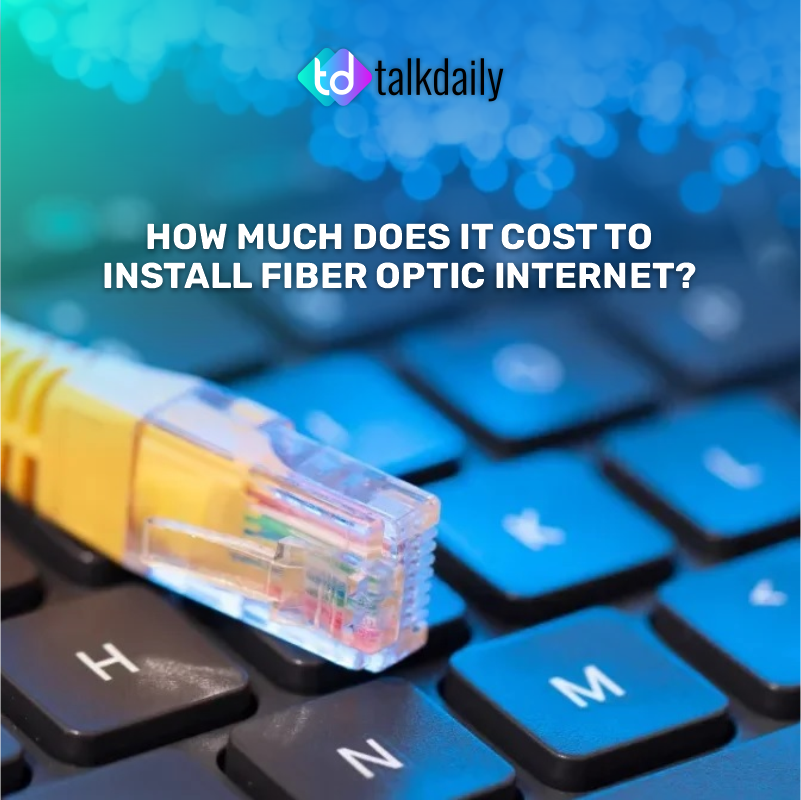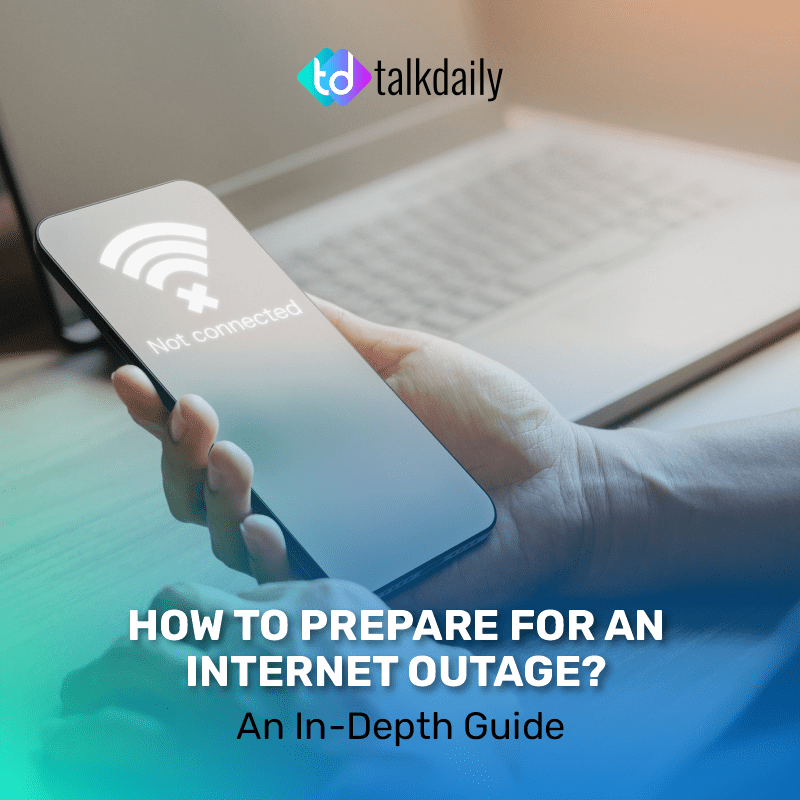Table of Contents
How Much Does it Cost to Install Fiber Optic Internet?
Introduction
Fiber optic internet is quickly becoming the top choice for consumers due to its unmatched speed and reliability. The article provides a detailed breakdown of how much it costs to install fiber optic internet, containing setup fees, equipment expenses, and monthly charges. Additionally, the article explores factors influencing these costs, including location and installation complexity, as well as the long-term benefits, such as improved speed and trustworthiness.
Hidden costs will be examined, along with user experiences, a step-by-step installation guide, comparisons with other internet options, and an overview of potential savings and long-term value. By the end, you’ll have a clear understanding of whether fiber optic internet is the right investment for you.
In-Depth Cost Analysis
When considering the installation of fiber optic internet, it’s important to understand the various costs involved. The installation costs typically include initial fees, which can range from $100 to $500, depending on your location. Fees cover labor and basic equipment required to set up the service in your home or office.
Additionally, you will need to invest in consistent tools, such as routers and modems, which can cost between $100 and $300. The devices are important for guaranteeing that you can take full advantage of the high speeds offered by fiber optic internet.
Further to the initial setup, you will also have to consider the monthly service fees. Basic plans for fiber optic internet usually start at around $50 per month, providing speeds of up to 100 Mbps. For those who require higher speeds, premium plans are available and can cost $150 or more per month, offering speeds that exceed 1 Gbps. The ongoing costs are an important factor to consider when evaluating the overall expense of fiber optic internet.
Cost-Determining Factors
1. Location
Urban areas often have lower installation costs due to existing frameworks. The necessary cabling and technology are already in place, reducing the need for extensive new installations.
Rural areas may incur higher costs due to the need for additional cabling. In these regions, the framework is often not as developed, requiring more extended work to connect homes and businesses to the fiber optic network.
2. Service Providers
Prices vary greatly among providers, so it’s important to compare offers. Different companies may offer various packages, promotions, and pricing structures. Researching and comparing these options can help you find the best deal for your needs.
3. Installation Complexity
Simple installations are more affordable. Suppose a home or office is already set up to easily connect to the fiber optic network. In that case, the installation process will be straightforward and less expensive.
Complex setups involving extensive cabling or structural modifications increase costs. If additional cabling is required or if considerable changes to your property are necessary to adapt the new service, these added complexities will drive up the overall cost.
The Benefits of Fiber Optic Connectivity
1. Speed
Offers much faster speeds compared to DSL and cable, making it ideal for high-bandwidth activities like live streaming and gaming. Fiber optic internet can provide especially higher download and upload speeds, often overreaching 1 Gbps. Therefore, it suits activities requiring considerable data, such as HD video streaming, online gaming, and large file transfers, offering a smoother and more efficient online experience.
2. Reliability
Less sensitive to interference and can maintain consistent speeds even during peak usage times. Unlike traditional copper cables, fiber optic cables are less affected by electromagnetic interference and physical barriers. Therefore, the internet connection becomes more stable and reliable, experiencing fewer slowdowns or outages, even when many users are online at the same time.
3. Future-Proofing
Fiber optic technology is more expandable and can support higher speeds as technology advances. As demand for faster internet continues to grow, fiber optic framework is well-equipped to handle these needs. High data capacity allows it to support future technological advancements and increased data usage without requiring significant upgrades.
Hidden Charges and Important Considerations
When installing fiber optic internet, it’s important to consider possible hidden costs that may arise. One such cost is the need for additional equipment. You might need to purchase or rent new routers or modems that are consistent with the fiber optic technology. The devices are necessary to ensure you can take full advantage of the high-speed internet service.
Another consideration is maintenance fees. Some providers may charge for maintenance or repairs, which can add to your overall expenses. Understanding what is covered under your service agreement and what additional costs you might incur for maintenance and problem-solving is essential.
Lastly, be aware of the contract terms. Many service providers require long-term responsibilities, and there may be early termination fees if you decide to cancel your service before the contract period ends. Understanding these terms beforehand can help you avoid unexpected charges and make a more informed decision about your internet service.
Client Testimonials and Feedback
When considering the switch to fiber optic internet, user experiences and reviews play an important role in decision-making. Many users who have upgraded to fiber optic internet report greatly improved internet performance. Frequently highlight faster download and upload speeds, more stable connections, and overall satisfaction with the service. The reviews often highlight the powerful improvement in their online activities, such as live streaming, gaming, and remote work, compared to their previous internet services.
In addition to user feedback, expert opinions also favor fiber optic internet. Industry experts always recommend fiber optic technology due to its excellent performance and dependability. Fiber optic connections are noted to be less likely to interfere. Experts can maintain constant speeds even during peak usage times. Experts also point out that the fiber optic framework is future-proof, meaning it can manage increasing data demands and support technological advancements without needing considerable upgrades. The combination of positive user experiences and strong expert acceptance makes fiber optic internet an attractive choice for those seeking a high-performance and trustworthy internet solution.
Read More: How to Prepare for an Internet Outage? An In-Depth Guide
Step-by-Step Installation Walk Through
Contact your chosen provider for a Step-by-Step Guide.
1. Initial Consultation
Contact your chosen provider for a first consultation and cost estimate. The first step in installing fiber optic internet is to reach out to a service provider. During this consultation, you’ll discuss your specific needs and get an estimate of the costs involved. The provider will explain their plans and any available promotions or packages that could benefit you.
2. Site Survey
A technician will visit your home to consider the installation requirements. After the initial consultation, a technician will conduct a site survey. Site survey involves a visit to your home to assess the existing framework and determine the best way to install the fiber optic cables. The technician will identify any possible challenges and ensure that your property is suitable for the installation.
3. Installation
The provider will install the necessary cabling and equipment. Once the site survey is complete and any possible issues are managed, the installation process begins. The provider’s team will install the fiber optic cables, connecting them from the main network to your home. Installation may involve running cables underground or along existing utility poles, depending on the framework in your area.
4. Setup
Once installed, the technician will configure your connection and test the speeds. After the physical installation is complete, the technician will set up your internet connection. Configuring your router and modem, ensuring all equipment is properly connected, and performing tests to verify that you are receiving the promised internet speeds. The technician will also address any questions or concerns you may have about using your new fiber optic internet service.
Meeting and cost estimate.
The first step in installing fiber optic internet is to reach out to a service provider. During this meeting, you’ll discuss your specific needs and get an estimate of the costs involved. The provider will explain their plans and any available promotions or packages that could benefit you.
How Fiber Optic Stacks Up Against Other Options
1. DSL
Generally, it is more affordable but slower and less reliable. DSL (Digital Subscriber Line) is one of the more reasonable internet options available. DSL uses existing telephone lines to deliver internet service, which helps keep costs low. However, DSL generally offers slower speeds compared to fiber optic internet, making it less suitable for high-data-capable activities like live streaming HD videos or online gaming. Additionally, the trustworthiness of DSL can be affected by the distance from the service provider’s central office, leading to potential slowdowns and disturbances.
2. Cable
Offers decent speeds but can slow down during peak times. Cable internet utilizes the same shielded cables that deliver cable TV service. Generally providing faster speeds than DSL, this service is widely available in many areas. However, cable internet can experience meaningful slowdowns during peak usage times when many users are online at the same time. The shared data capability can lead to unpredictable speeds, especially in closely populated neighborhoods.
3. Satellite
Available in remote areas but often expensive and with higher delay. Satellite internet is a possible option for those living in remote or countryside areas where other types of internet services may not be available. Satellites are used to light internet signals to a dish installed at home.
While satellite internet provides connectivity in hard-to-reach areas, it manages to be more expensive than other options. Additionally, satellite internet experiences from higher delays due to the long distances that data must travel to and from the satellite, which can affect the performance of real-time activities such as video calls and online gaming.
The Installation Journey
1. Pre-Installation
Ensure you have all the required permissions if you live in a rented property or a shared building. Before the installation begins, it’s important to confirm any required permissions. Suppose you reside in a rented property or a shared building. In that case, you may need to get approval from your owner or property management. The pre-installation step is important to avoid any possible issues or delays during the installation process.
2. Installation Day
Technicians will run fiber optic cables from the main network to your home and set up the necessary equipment. On the planned installation day, technicians will arrive at your property to install the fiber optic cables. Technicians will connect these cables from the main network to your home, which may involve running cables underground or along existing service poles. The technicians will also set up the necessary equipment, such as routers and modems, to ensure your internet connection is properly established.
3. Post-Installation
Perform speed tests to ensure you’re getting the promised performance. After the installation is complete, it’s important to verify that the new fiber optic internet connection is performing as expected. Perform speed tests to check if you are receiving the speeds promised by your service provider. Confirm the installation was successful and confirm that you are getting the high-speed internet service you signed up for. If there are any issues, you can control them with the technician before they leave.
Deals and Cost Reduction Strategies
When considering the installation of fiber optic internet, it’s beneficial to explore possible savings and promotional offers that many providers offer. Often, internet service providers develop special discounts or promotional rates to attract new customers. The promotions can greatly reduce the initial costs of installation and the monthly service fees, making fiber optic internet more reasonable.
Another way to save money is by combining services. Many providers offer packages that combine fiber optic internet with other services such as TV and phone. Bundling these services can lead to considerable savings compared to subscribing to each service individually. Not only does the procedure simplify billing, but it also provides a more cost-effective solution for households desiring to maximize their connectivity and entertainment options while keeping expenses manageable. By taking advantage of these promotional offers and bundling options, consumers can make the transition to fiber optic internet more budget-friendly.
Long-Term Investment Value
Investing in fiber optic internet often involves higher initial costs, but these are often offset by considerable long-term benefits. One of the most significant advantages is the constant and extremely fast internet speeds that fiber optic technology provides. The improved performance is especially beneficial for households and businesses that depend heavily on internet connectivity for activities such as live streaming, gaming, remote work, and large data transfers. Over time, the improved efficiency and trustworthiness of fiber optic internet can lead to greater productivity and satisfaction, justifying the initial expenditure.
Additionally, having fiber optic internet can increase the overall value of a property. In today’s digital age, a fast and dependable internet connection is a highly attractive feature for possible homebuyers. Properties provided with fiber optic internet are often more attractive on the market as future buyers recognize the benefits of having access to superior internet speeds. Such a feature can make a property more competitive and possibly allow it to sell at a higher price. Thus, the investment in fiber optic technology not only improves your current living experience but also adds to the long-term value of your home.
Weighing the Pros and Cons of Fiber Internet
| Pros | Cons |
| High Speeds Ideal for streaming, gaming, and other high-bandwidth activities. | Higher Initial Costs Installation and equipment can be expensive. |
| Reliability Less prone to interruptions and slowdowns. | Availability Not available in all areas, especially rural regions. |
| Scalability Future-proof technology that can handle increasing internet demands. |
Final Thoughts: How much does it cost to install fiber optic internet?
Investing in fiber optic internet offers multiple benefits, from faster speeds to greater dependability. While the initial installation costs can be higher than other options, the long-term value and possible savings make it a valuable consideration. By understanding the factors affecting costs and the overall benefits, you can make an informed decision about whether fiber optic internet is the right choice for you.
1. How much does it cost to install fiber optic internet?
The installation cost typically ranges from $100 to $500, depending on your location and provider. This includes labor and basic equipment. Additional equipment like routers and modems may cost between $100 and $300.
2. What are the ongoing costs associated with fiber optic internet?
Monthly service fees for fiber optic internet start around $50 for basic plans with speeds up to 100 Mbps. Premium plans offering speeds exceeding 1 Gbps can cost $150 or more per month.
3. What factors influence the cost of fiber optic internet installation?
Key factors include your location, with urban areas generally having lower costs due to existing infrastructure, and the complexity of the installation, such as the need for additional cabling or structural modifications.




